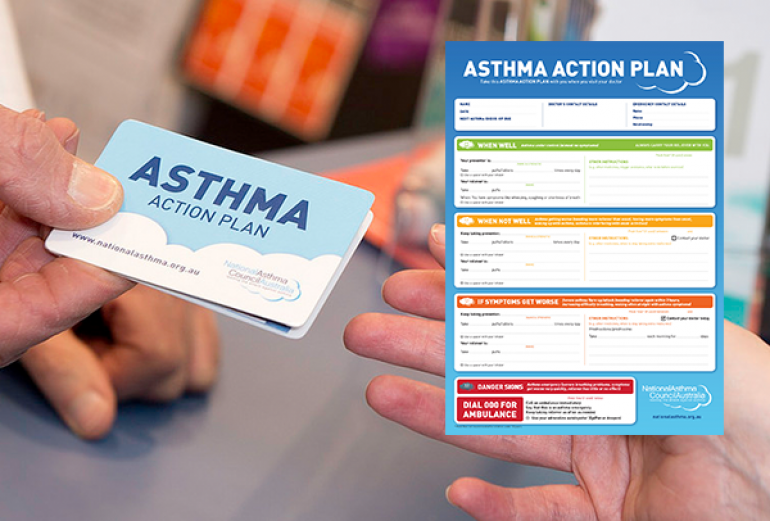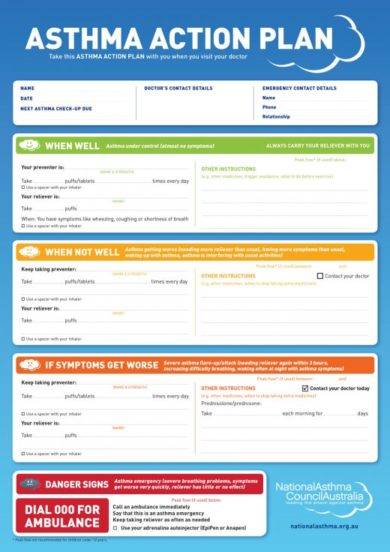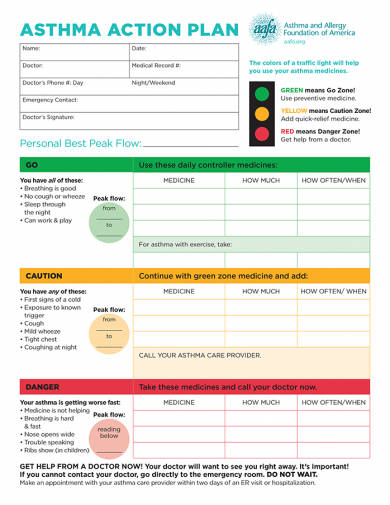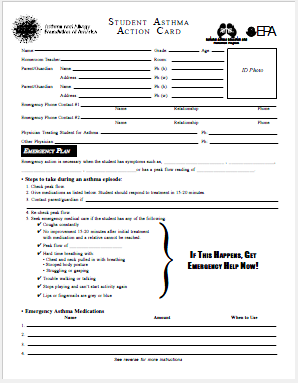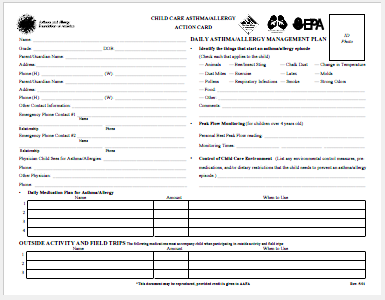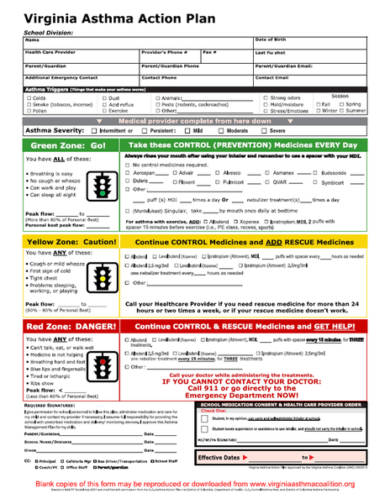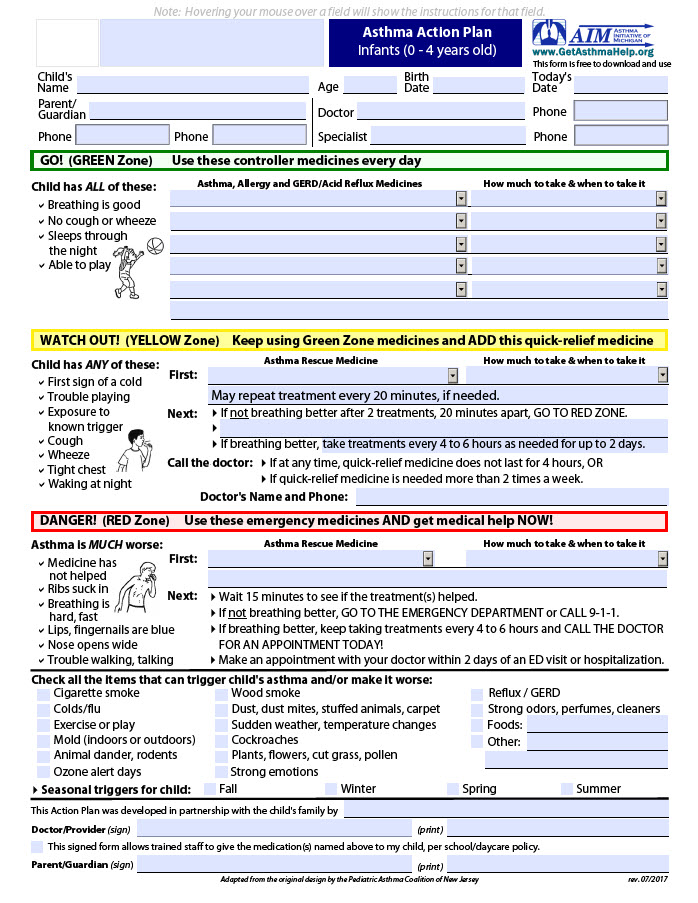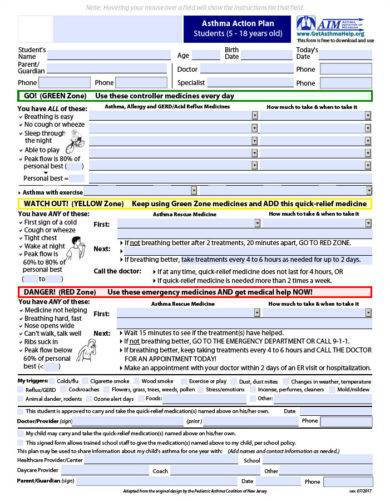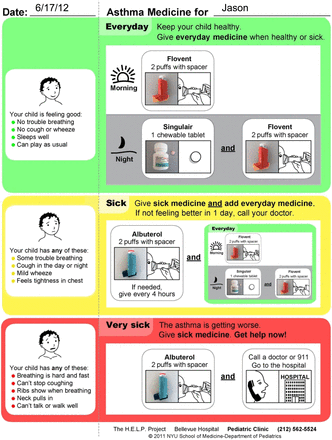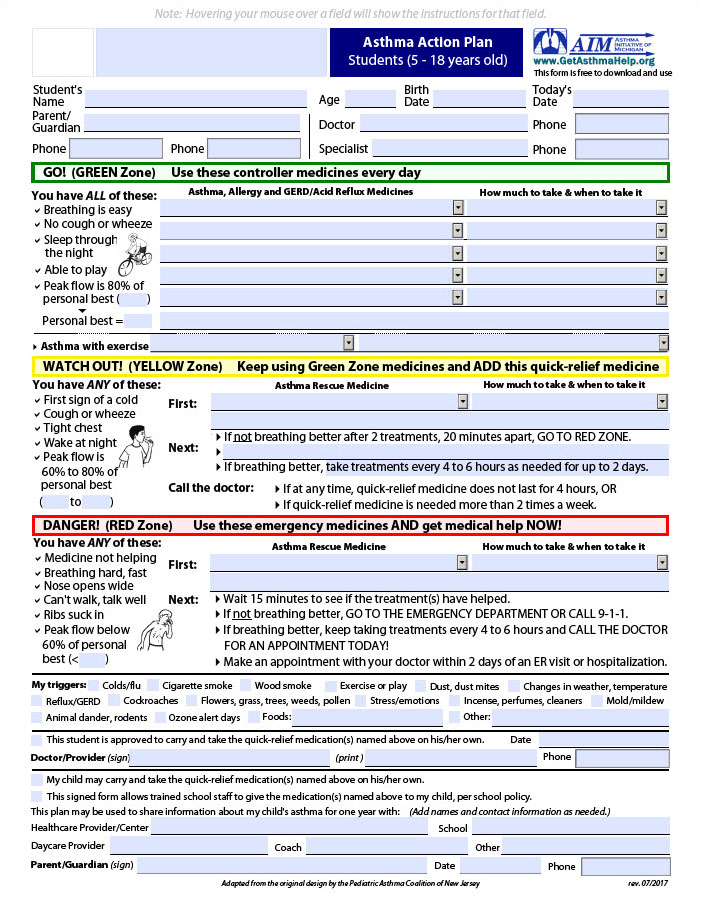9+ Asthma Action Plan Examples to Download
An asthma action plan, also known as an asthma management plan, is a detailed plan that an asthma patient should make with the help of his doctor to help him control his condition. The action plan would include the treatment that the patient is taking for his asthma such as the type of medication he takes and the frequency he observes in taking them, a plan on how he can control his asthma, and how to handle its worsening especially during asthma attacks.
Asthma attacks are dangerous, especially for someone who is unaccompanied during one. Despite the best medicines and the greatest care, asthma attacks can still happen. The best thing that we can do when they occur is to intervene as quickly and as effectively as possible. An asthma action plan can help make this easily possible. You may also see work action plan examples.
Asthma Action Plan Example
Asthma Action Plan
Traffic Light Asthma Action Plan
How Does an Asthma Action Plan Work?
The importance of a written action plan for emergencies or even regular days is a matter that most people overlook. In times of emergencies such as asthma attacks, quick wit and focus are necessary to help the patient. Unfortunately, in a moment of panic, it is difficult to think and react wisely. A written asthma action plan will guide both the patient and his companion on what to do during such an occurrence.
An asthma attack’s purpose is also to take early action to at least reduce the effects of asthma to the patient. Once the patient and the doctor has completed creating one, it should be distributed to the patient and to the people directly around him: his family, caretaker, his school teachers, even his friends. It is also important to conduct a regular editing of the action plan because it may not always be accurate to the patient’s present condition. You may also see business action plan examples.
An asthma action plan can also help reduce a patient’s need for medical emergency treatment because the written simple plan can help diminish the symptoms. Here’s how an action plan can help a patient:
1. An asthma action plan can help you pinpoint the signs that your condition is worsening. Once you become aware of this, you can immediately get help to avoid the risk of an asthma attack.
2. An asthma action plan can give you the exact general schedule of when and how you should take your medication. This is important because taking your medicines exactly when they were prescribed can keep your asthma at bay.
3. An asthma action plan can help you monitor your asthma daily. This is important because your condition may be always changing. Keep track of it so that it will always be under your control.
4. An asthma action plan can be used to make the people around you understand your condition. This is important in case of emergencies wherein you will need the help of other people. So it is best to let these people know what they can do. You may also see sales action plan examples.
Asthma Action Plan Example for Students
Asthma Action Plan Example for Childcare
What Are Written in an Asthma Action Plan?
An asthma action plan should be unique to each person because, of course, each patient has different asthma cases. But despite these differences, there are qualities and details that an asthma action plan should always possess:
1. An asthma action plan should be written. This way, it will be easier to give a copy of it to the people involved with the patient.
2. An asthma action plan should be unique to every patient. As aforementioned, no two patients share the exact same asthma condition. This means that they have different needs and treatment procedures that should be stated in the action plan. Since no two patients are the same, no two action plans should be as well. They need to be personally created for a specific patient in mind. You may also see employee corrective action plan examples.
3. An asthma action plan should also include a list of exacerbation symptoms that a patient and his caregiver can use as a guide to know when an asthma attack is coming.
4. An asthma action plan should also include instructions on what to do when these symptoms happen. Of course, no one can expect the asthma patient’s companion at the moment of the attack to know exactly what to do and the patient may not always have the ability to tell him. An asthma action plan can do the telling for both parties. You may also like how to make an action plan.
By following and sticking to it, no companion would bear the burden of not knowing what to do to an asthma attack patient, and no patient would have to endure another helpless episode.
5. As asthma action plan should include the following information: the date of creation, the patient’s name, his doctor’s name, the name and contact details of an emergency contact person.
6. As asthma action play may also (not in all cases) observe the traffic light system wherein there are colors that will be used to assess the gravity of the exacerbation that the patient is experiencing. The green color would mean that the situation is still under control. The red color, on the other hand, would point that the case is already an emergency. You may also check out research action plan examples.
7. An asthma action plan should also have a response plan even for the smallest symptom observed.
Extensive Asthma Action Plan
0–4 Years Old Asthma Action Plan
5–18 Years Old Asthma Action Plan
The Traffic Light System
The traffic light system is a way to recognize the severity of the condition of the patient. It is a systematized, color coded structure that divides symptoms depending on its seriousness. Adapting the idea of regular traffic lights, the traffic light system is also divided into 3 types of colors.
1. The Green Light for Go.
This should be every patient and every caretaker’s aim, to be in the green light and to stay in the green light. The characteristics of a patient in the green light is when he/she is breathing easily with no coughs or wheezes, capable of seeing through his regular daily activities with no unwanted interruptions caused by difficulty in breathing, and sleeping through the night without coughing. You may also see risk plan examples & samples.
Even when a patient is in the green light, his medication should still be strictly observed and he should still be kept away from triggers.
2. The Yellow Sign for Caution.
The yellow sign indicates that a patient is not a hundred percent fine but he is not in danger either. He is caught right in the middle where he may be experiencing a little discomfort, which should be answered to as soon as possible before it leads to something more severe. You may also like implementation plan examples & samples.
The signs that a patient is in the yellow sign are the following: coughs, shortness of breath, wheezing, has trouble doing his routine activities, chest tightening, waking up in the middle of the night with difficulty in breathing. For cases like this, the doctor may recommend rescue medicine, which is basically a medicine that a patient should take during these situations. You may also check out sales plan examples.
3. The Red Zone for Danger.
When you think that you are in the red zone, it is best to call your doctor immediately. However, if you think the symptoms are even more severe, don’t hesitate to call 911. You know you are in the red zone when you are breathing fast and hard, your nose is wide open, you have difficulty walking, you have a difficulty in talking, or your ribs are showing from beneath your clothes. You might be interested in emergency plan examples.
Why Are Asthma Action Plans Effective?
1. An asthma simple action plan is a type of self-management education. It equips the patient with the necessary knowledge to keep his asthma from controlling him and his daily life. It allows a patient to get to know his condition better which will result in a more responsible, more responsive attitude toward his asthma.
This action plan also enables a patient to be more responsible since he is tasked to do one simple thing: follow the instructions on the action plan. And the inability to do so can lead to consequences that he alone will suffer.
2. An asthma action plan will keep the patient from being dependent on others because he doesn’t need to. The action plan will tell him what to do to keep himself from asthma attacks. It will also tell him what to do if ever these attacks still happen. You may also see research plan examples & samples.
3. An asthma action plan can help improve a patient’s health because it will serve as a constant reminder of his obligations to his health which may include observance of proper medication or a specialized exercise regimen. You may also like quality management plan examples.
Low Literacy Asthma Action Plan
18 Years Old and Older Action Plan
Massachusetts Asthma Action Plan
Important Elements in an Asthma Action Plan
1. Structured Education. This basically means that the general action plan shows a detailed and thorough information regarding the nature of the disease, the nature of the treatment taken, the patient’s clear objectives for the treatment, definite instructions on how to use the treatment and how to conduct a successful self-monitoring routine, reminders on how to successfully recognize and manage exacerbation even the smallest ones, and a long list of activities that needs to be avoided because they may trigger the symptoms to resurface.
2. These details are important to give a patient a thorough run-through of the things he needs to get done and the things he must not do for a successful asthma treatment or at least the alleviation of it. The patient needs to be thoroughly educated because he alone can make his asthma treatment successful. Even the tiniest detail forgotten and unobserved can lead to serious complications, which can only make the patient’s condition severe. You may also see daily plan examples & samples.
3. Specific advice on how to recognize the loss of asthma control. An asthma doctor should put specific instructions on how a patient can recognize if his asthma has been somehow triggered because this situation calls for immediate plan of action, which the patient cannot do if he doesn’t recognize the need for it when he experiences it.
4. Written instructions. As much as possible, the action plan should be detailed. Let your doctor state everything clearly, even the most obvious, tiniest information. The traffic light system is also very much useful to make an action plan understandable. You may also like hotel operational business plan examples.
5. Specific advice on when to seek professional medical treatment.
When stricken with a condition like asthma, the most effective treatment is to be responsible. Knowing what your body needs you to do to stay healthy, knowing what your doctor expects you to do to keep your condition under control are the key points you need to continually observe. You are responsible for your body and you are your greatest treatment partner. You may also check out project plan examples.



